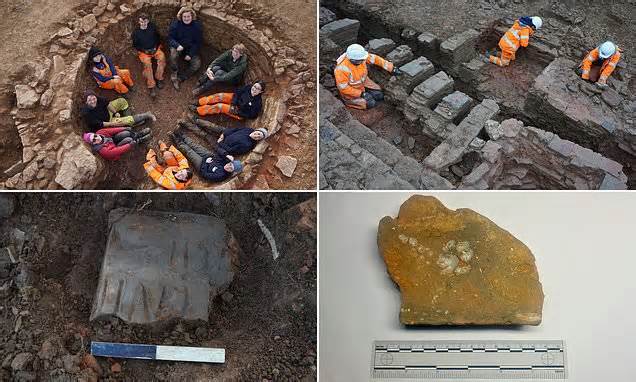Archaeologists have discovered a Roman trading complex that provides a detailed picture of life in rural Britain under Roman occupation.
Archaeologists from the District of Corby, Northamptonshire, made the exclusive discovery of an excavation in the Priors Hall Park subdivision.
Two shingle furnaces were discovered, one lime kiln for mortar production and five pottery kilns along the evidence of stone and clay scale extraction.
The discovery team said that with further study, it could cast a new tone on the city’s trade history and what rural life was like at the end of Roman Britain.
Archaeologists have discovered a Roman trading complex that provides a detailed picture of life in rural Britain under Roman occupation.
A tile fragment was found with a full glazed cat print. Archaeologists from the Corby district of Northamptonshire made this exclusive discovery an excavation in the Priors Hall Park subdivision.
Oxford Archaeology East recently completed a six-month excavation of a densely populated Roman-British commercial landscape due to the past to discover the ruins.
Excavations took place in a domain of Roman villas in the city’s Priors Hall and give a detailed picture of the other people who worked and lived in the domain.
The location of the site was discovered in the last century of Roman occupation, a time of economic and social unrest within the empire.
The furnaces and other discoveries were connected through a steel surface through which it would have been used to facilitate the movement of the fabrics mandatory for the structure and operation of a giant Roman villa about 300 meters to the east.
The inscribed mosaic included the words ENII (F) ECIT Maybe () nenti or () nenus FECIT, which would possibly have been the mosaic call
Oxford Archaeology East recently completed a six-month excavation of a densely populated Roman-British commercial landscape.
They also discovered a lot of coins and desirable items, such as animal bones, pottery and steel items, as well as jewelry and tools.
The team claims that these elements offer a rare view of the life of the farm staff compared to the owner of the villa, as shown through other discoveries.
A specific focus is a coin of the rebellious Emperor Alecto, who ruled a small separatist empire in Britain in 293 AD.
The coin went through a single hole so it can be used as a fashion item, suggesting that its price goes beyond money.
An entire bow decorated with a copper alloy and depicting two flanking dolphins representing links with the sea gods, Neptune and Ocean, discovered on site, presents fashion and the era.
Comments below have been moderated.
By posting your comment, you settle for our internal rules.
We will post your comment and link to the story on your Facebook timeline at the same time as it will be posted on MailOnline. To do this, we will link your MailOnline account to your Facebook account. We’ll ask you to verify this for your first Facebook post.
You can from each post if you need it to be published on Facebook. Your core Facebook points will be used to provide you with personalized content, marketing and advertising in accordance with our privacy policy.
Edited through Associated Newspapers Ltd
Part of the Daily Mail, The Mail on Sunday and Metro Media Group

